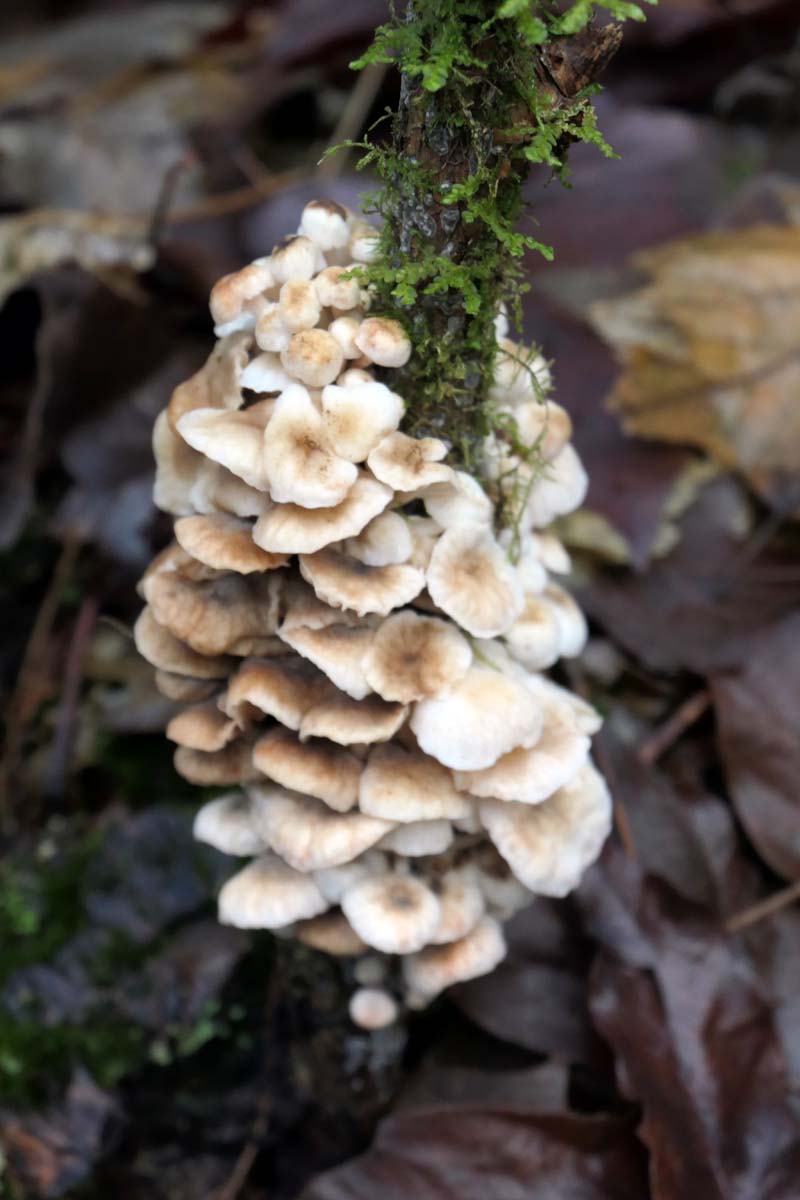
The Mushroom is the Elf of Plants – (1350)
The Mushroom is the Elf of Plants –
At Evening, it is not
At Morning, in a Truffled Hut
It stop opon a Spot
As if it tarried always
And yet it’s whole Career
Is shorter than a Snake’s Delay –
And fleeter than a Tare –
’Tis Vegetation’s Juggler –
The Germ of Alibi –
Doth like a Bubble antedate
And like a Bubble, hie –
I feel as if the Grass was pleased
To have it intermit –
This surreptitious Scion
Of Summer’s circumspect.
Had Nature any supple Face
Or could she one contemn –
Had Nature an Apostate –
That Mushroom – it is Him!
-by Emily Dickinson

At no time in the year is the concept of “fleeting” more realized than now. Thoughts are drawn to the nature of time, the passing of yet another cycle around the sun, when we approach New Year’s Eve.

Nature, as well, basically screams about transience. One day you see the mushrooms firmly planted on logs and soils, the next day they’ve disappeared. When you walk the same route, as I do, several times a week, it is almost spooky how the fungi jump into your field of vision or vanish, almost while you look.

The Thesaurus definition of the verb to mushroom – as in sprout or grow quickly – confirms that aspect of mycological nature:
Strongest matches


Strong matches
Weak matches

Their transient nature extends to my ability to remember the classifications, despite the fact that the five Phyla in the kingdom of fungi have such wonderfully strange names.
There are Chytrids, who live in water. There are the Zygomycota, also called the conjugated fungi, known to us more familiarly as bread mold. I can just see my self sighing at the breakfast table: “oh no, conjugated fungus again…”
“Sac fungi, where did I put you?” wonders the baker, looking for the package of yeast, or the cook looking for morels and truffles. These belong to the Phylum of Ascomycota, and can have horrid consequences for people with compromised immune systems, inducing fungal pneumonia, for example, as well as being harmful to multiple crops.



What you buy in the store, or collect in the woods to cook with your pasta are Basidiomycota, the club fungi, which often have gills under their caps. However the shelved creatures you see on trees also belong to this Phylum.




The imperfect fungi flourish in imperfect households, or suitably moist and dirty conditions in nature: the common mold are part of the Phylum Deuteromycota. Their reproduction is strictly asexual. Which is weird, given how fast they spread – all without fun?
And here we demonstrate the fleeting nature of intentions: all I wanted to do today was show off the beauty seen in the woods this week and the persistent cleverness of Dickinson’s observations. Had to yield to the desire to learn more, once more. Well, at least I can now be brilliantly exclamatory when I open the bread drawer – should I be able to remember conjugated fungus for more than two minutes…..

We’ll hear today from a composer who fell for fungi, John Cage. (The link is to an article that lays out Cage’s passion.) Here is one of his Piano pieces in a strange arrangement for Thai gongs and electric bass – why not, we’re dealing with strange nature, after all.







Sara Lee Silberman
Wonderful photos, and wishing you a new year without a single conjugated fungus on your breakfast bread!